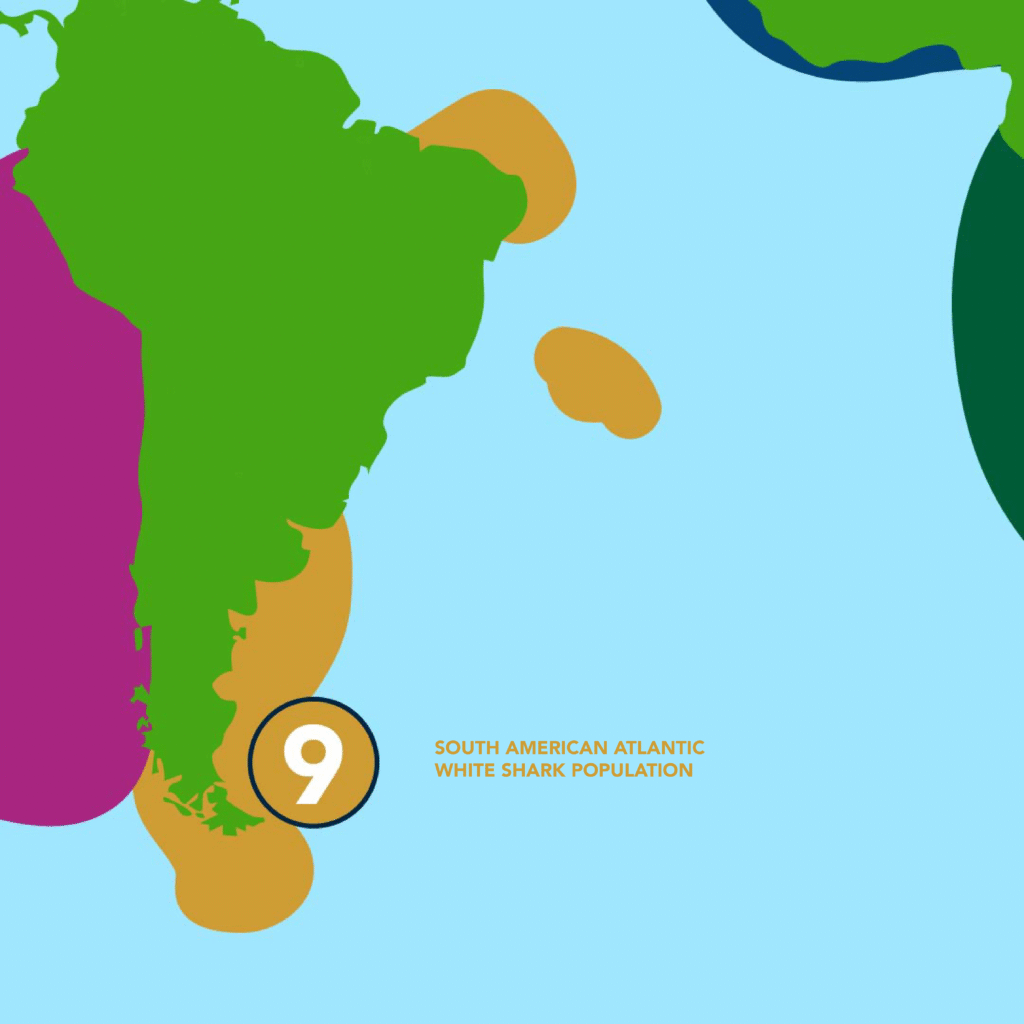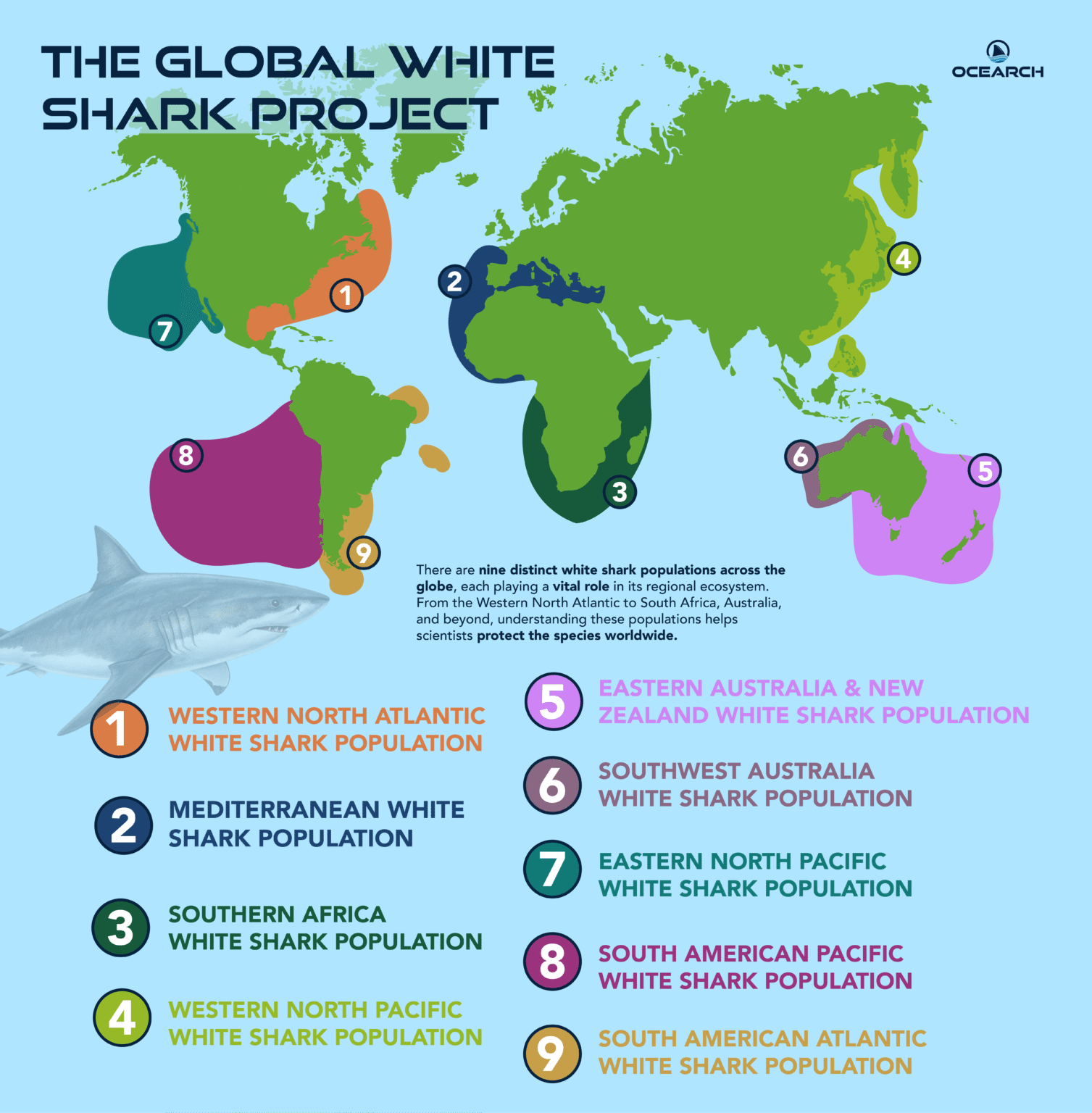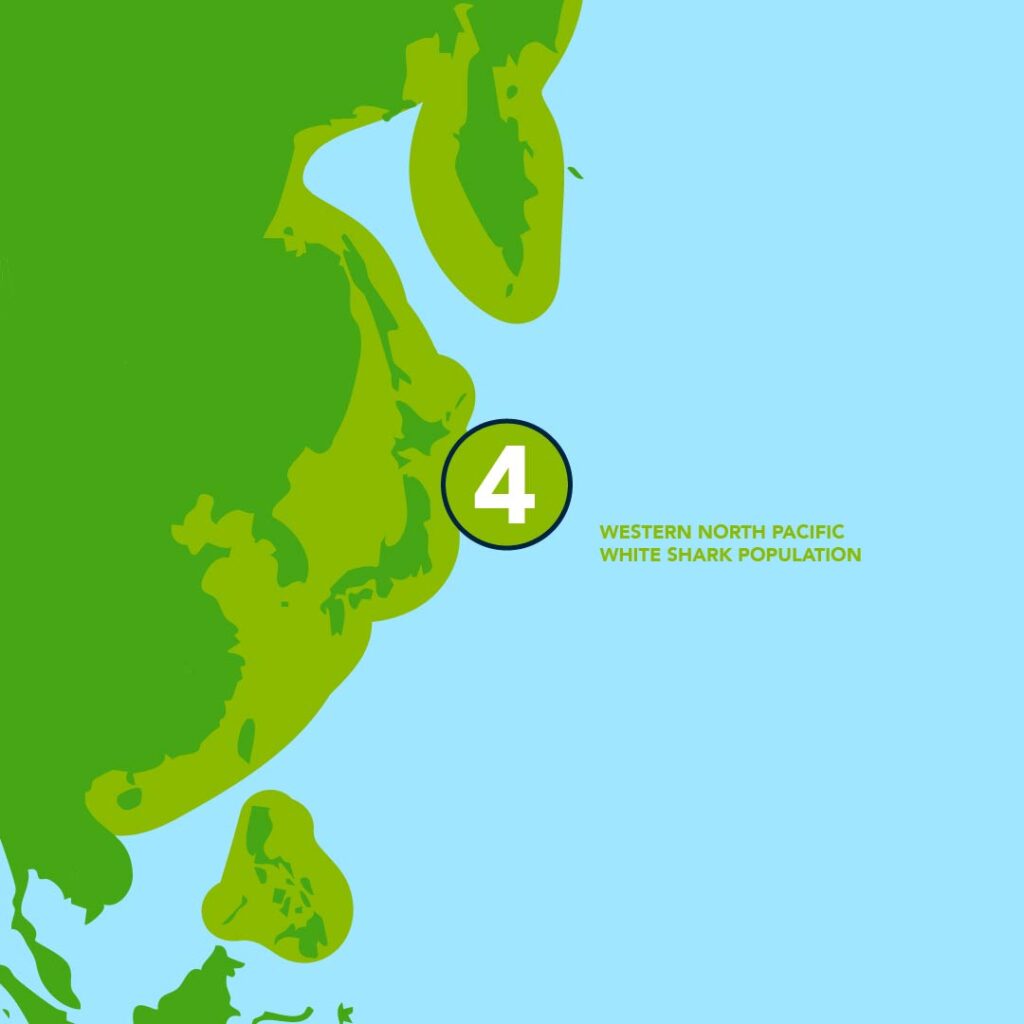THE GLOBAL WHITE SHARK PROJECT
At OCEARCH, we’re on a mission to solve the Global White Shark Puzzle
and return our world’s oceans to balance and abundance.
For over 400 million years, white sharks have roamed our oceans—feared, admired, and misunderstood. Today, fearless crews and leading scientists aboard the M/V OCEARCH are uncovering their secrets, safely studying these giants in some of the harshest conditions. Together, we’re replacing fear with facts and solving the life history puzzle of white sharks.
Our mission is to support regional scientists and study the 9 recognized populations worldwide—tracking migrations, critical habitats, nursery grounds, reproduction, and threats. For the first time, this data will help guide conservation and fishery policies to protect sharks across the globe.
1. Western North Atlantic Population
For over a decade, OCEARCH has studied white sharks along the U.S. East Coast, Gulf of Mexico, and Atlantic Canada—tagging more than 100 sharks and supporting 25+ collaborative projects. Using satellite and acoustic tags, we’ve mapped where these sharks go and when, while biological samples reveal their health, prey, exposure to toxins, and genetic links to other global populations. This historic dataset provides a baseline for future research and showcases the power of collaboration to help return our oceans to balance and abundance.
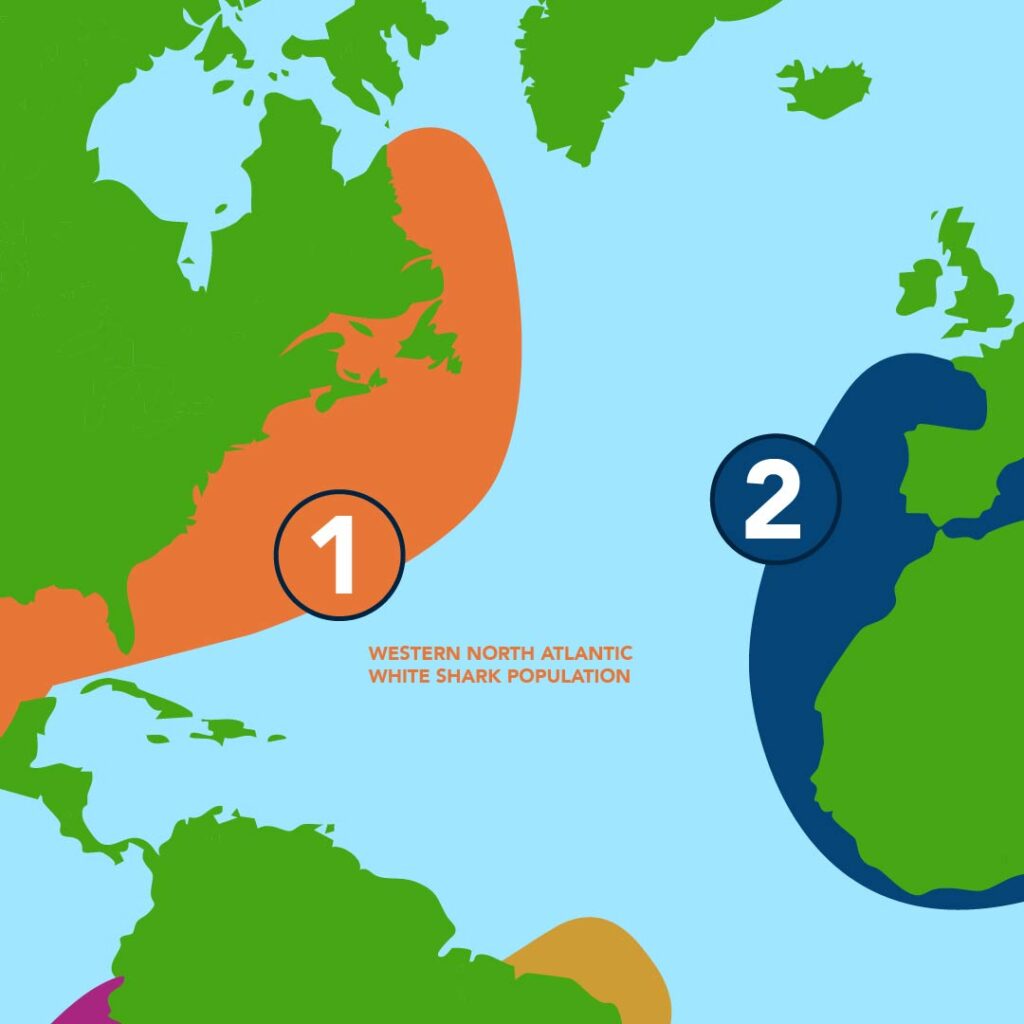
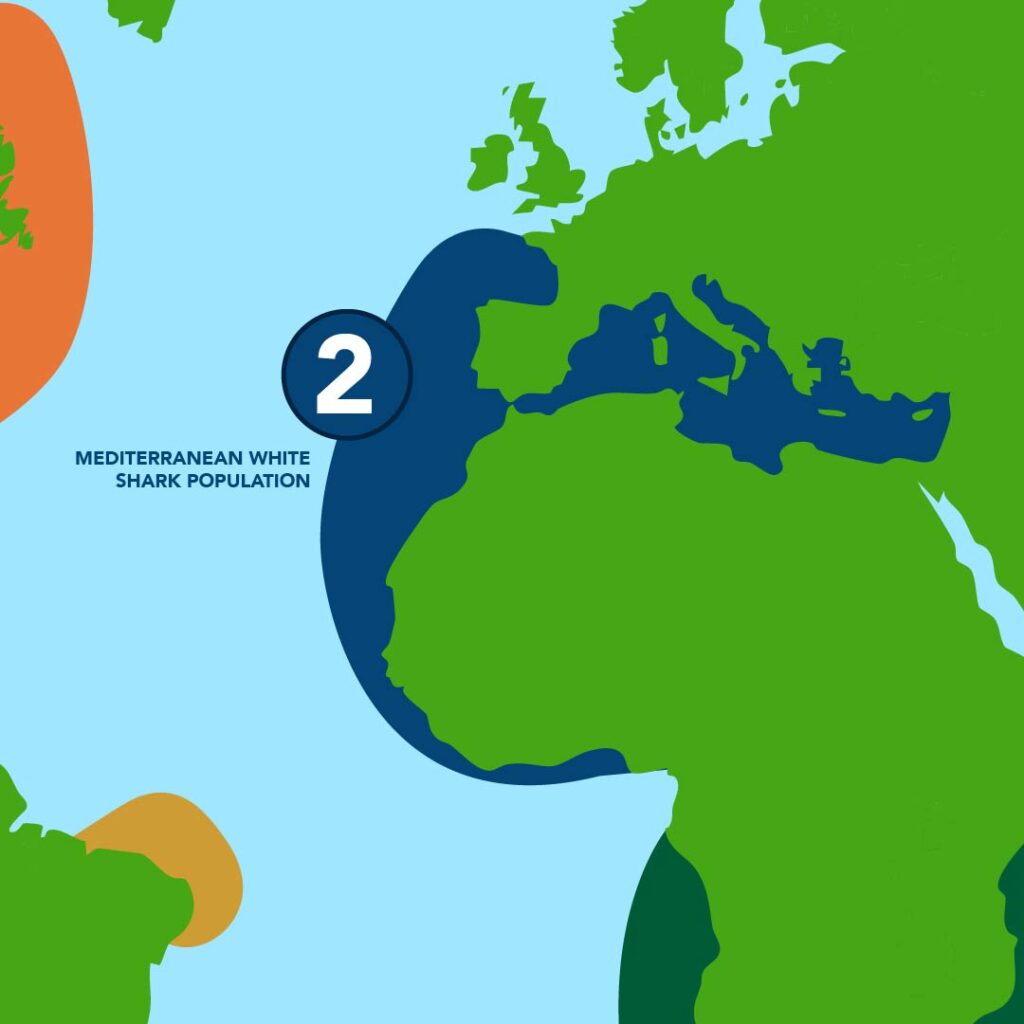
2. Mediterranean Population
White sharks in the Mediterranean are Critically Endangered, with populations plummeting over the past 30–40 years. Nearly a third of shark and ray species here are fished to the brink, signaling an ecosystem in crisis. To protect them, we need critical life history data. OCEARCH traveled 4,000+ miles to launch a multi-year study of Mediterranean white sharks in 2024—work that could help restore balance to these waters and safeguard other imperiled shark populations.
3. Southern Africa Population
The Southern Africa white shark population ranges from South Africa’s coasts to Mozambique and Madagascar. In 2012, OCEARCH helped study nearly 50 sharks, gathering key data on movements, habitats, mercury levels, and overall health. Though most tags have since expired, this baseline research revealed major habitat shifts following the arrival of shark-eating orcas in the Western Cape in 2017. The work also laid the foundation for lasting scientific collaborations that continue today.
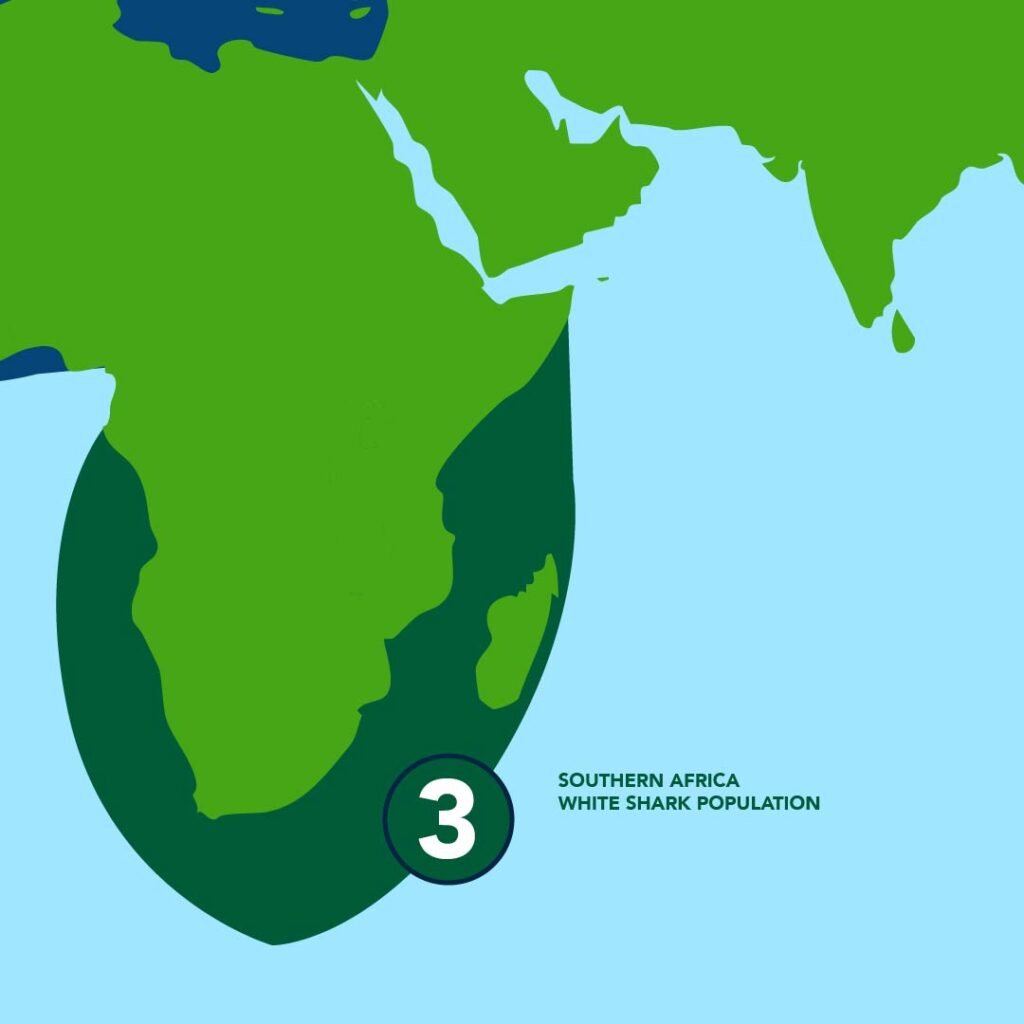
4. Western North Pacific Population
White sharks in the Western North Pacific range from Russia and Korea to Japan, China, Taiwan, Vietnam, the Philippines, and Malaysia. Most of what we know comes from fisheries captures and confirmed sightings, with data limited to samples from mortalities. Trends suggest the population has been stable or slightly declining since the 1990s, but unlike other regions, there are currently no protective measures in place—making conservation here especially urgent.
5. Eastern Australia & New Zealand Population
This population ranges from Tasmania to Southern Queensland and east to New Zealand. White sharks here suffered a >90% decline in the 20th century due to targeted fishing and bather protection programs. Modern non-lethal sampling has made it one of the most well-studied populations, but despite protections, historical catch records and genetic studies show no signs of recovery. Continued research is critical to understanding and protecting this vulnerable population.
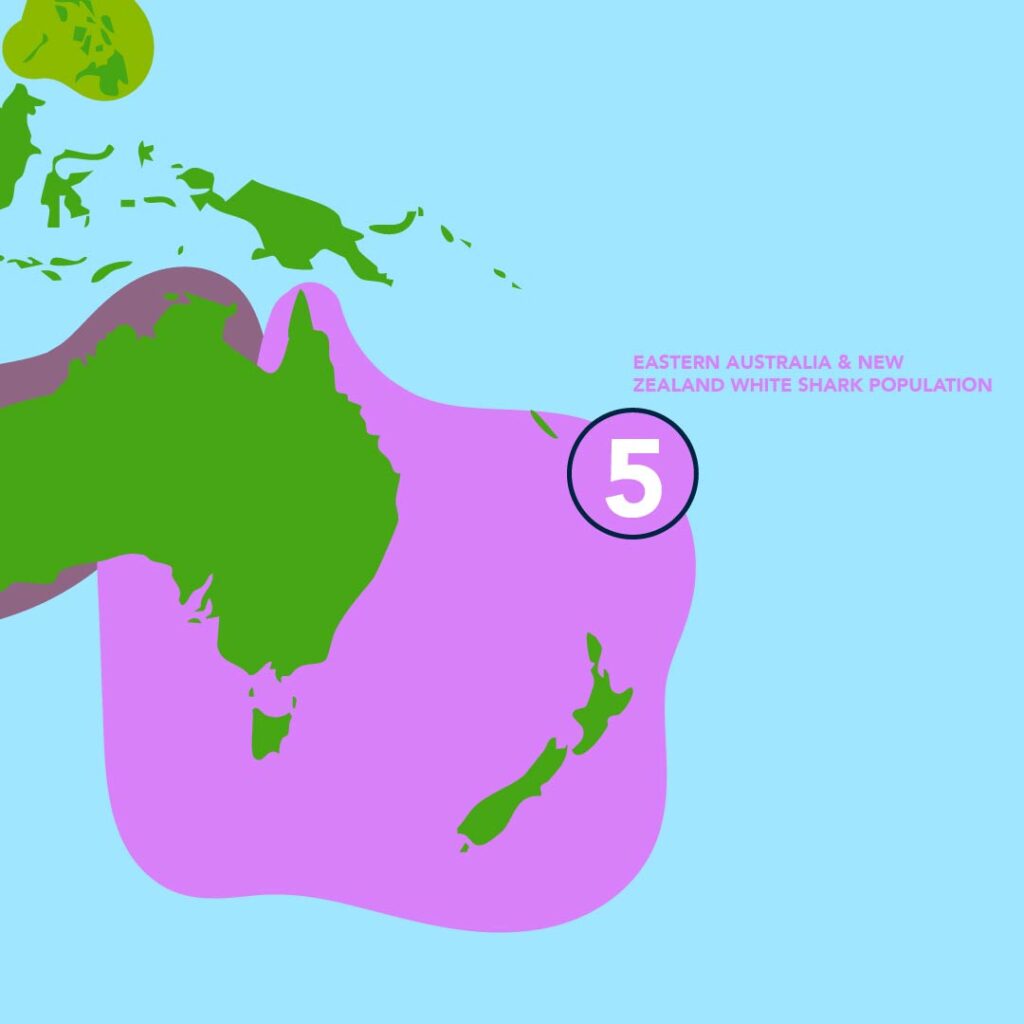
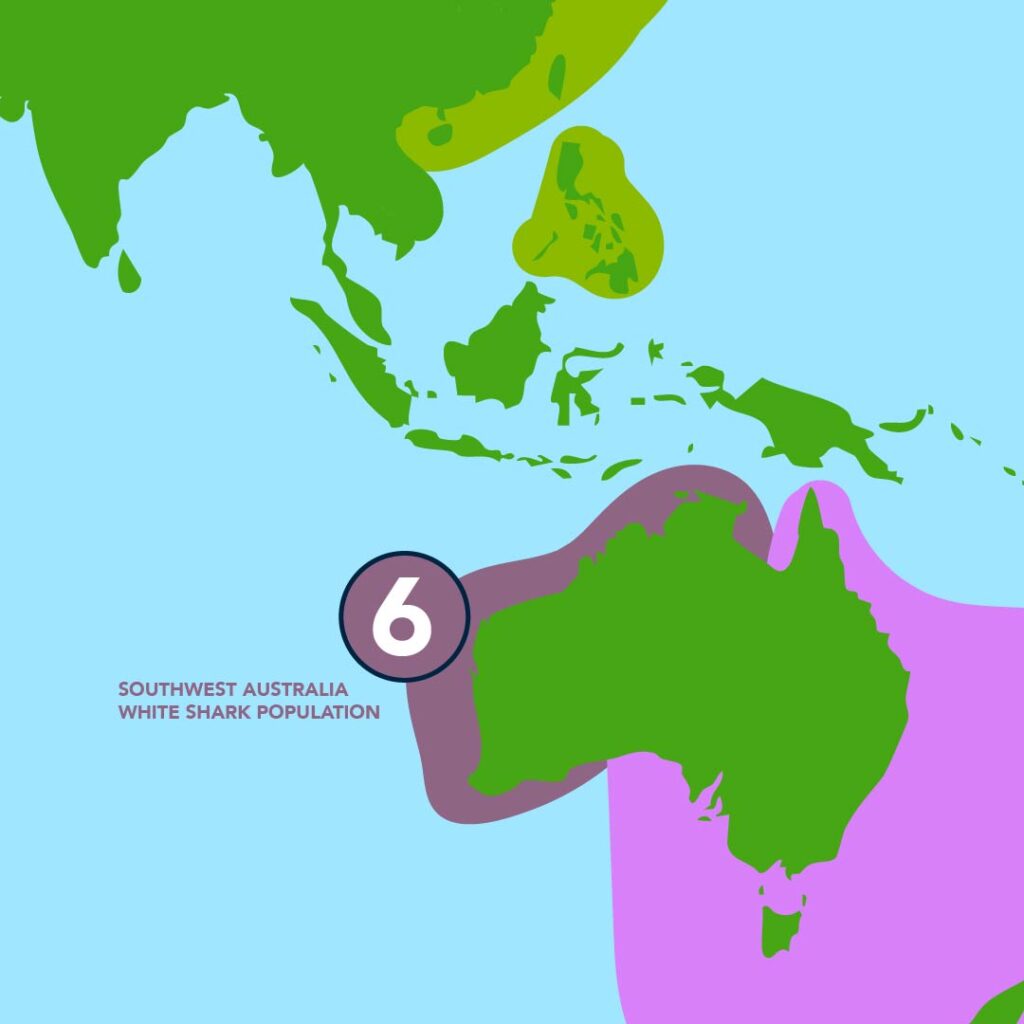
6. Southwest Australia Population
In 2015, OCEARCH partnered with local researchers to tag 30 tiger sharks, many of whom also study the region’s white shark population. This population spans from western Victoria to northwestern Western Australia, with some overlap with the eastern group. Genetic studies show the population has remained stable since protections in the 1990s, but there’s no evidence of recovery. Alarmingly, research revealed a very small breeding population, with 60% of sampled sharks being close relatives. Continued tracking is essential to determine if recovery is possible.
7. Eastern North Pacific Population
White sharks in the Eastern North Pacific range from Alaska to Mexico and west to Hawaii. Core habitats include the California and Mexican coasts, the waters around Hawaii, and a seasonal offshore foraging zone known as the “White Shark Café” (SOFA). This well-studied population is thought to be stable or even increasing. From 2007–2010, OCEARCH pioneered its research methods here, studying over 40 sharks and identifying key habitats critical to their survival.
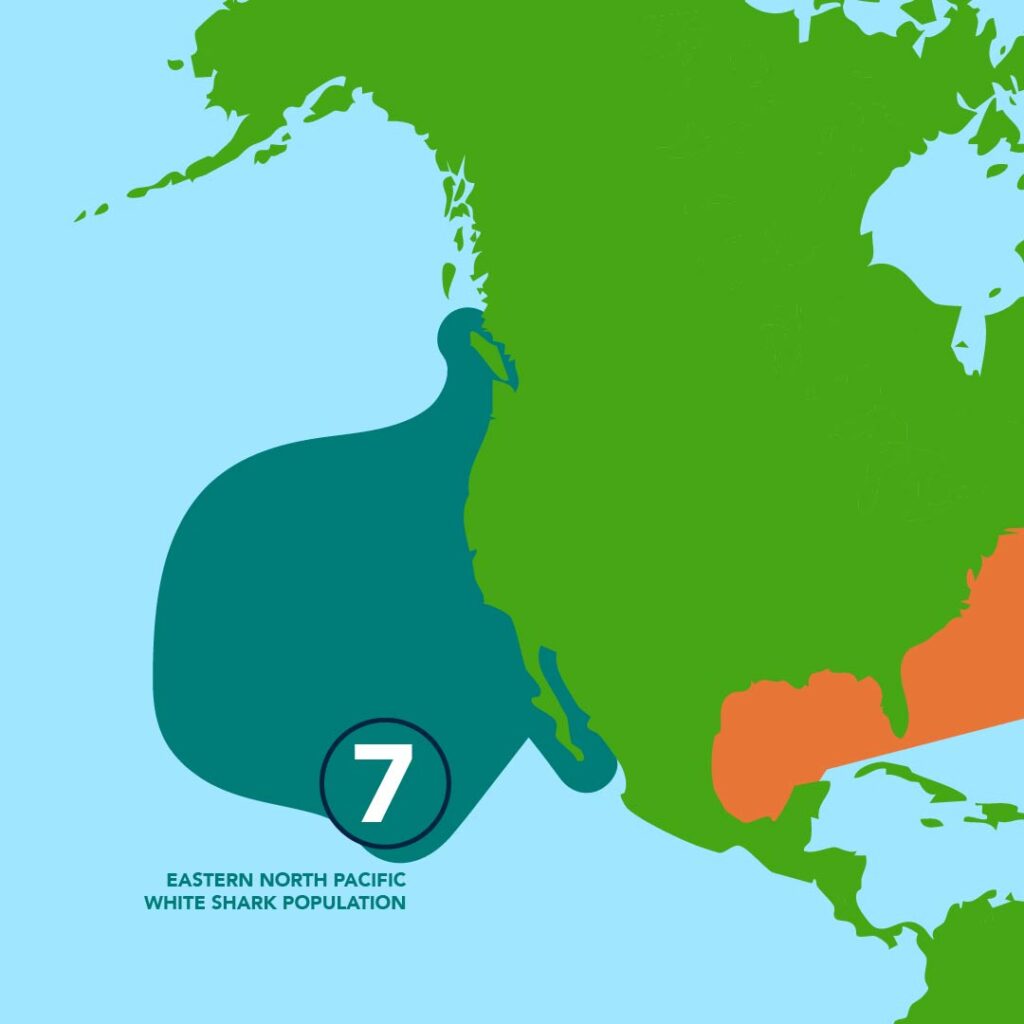
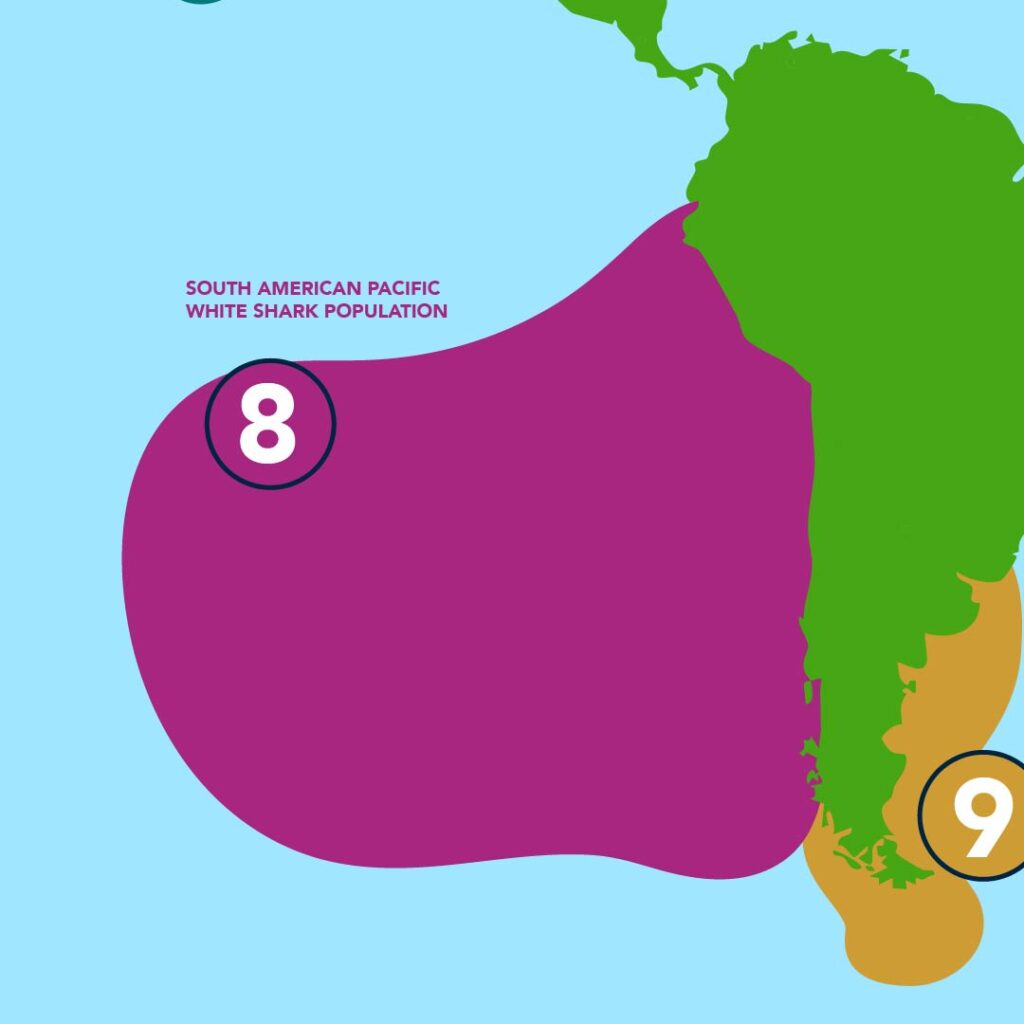
8. South American Pacific Population
Historically present along the coasts of Peru and Chile, white sharks in this region have been severely impacted by fishing, with no recent sightings and little known about any remaining population. In 2014, OCEARCH explored the Juan Fernández Archipelago, where instead of white sharks, only one mako and six blue sharks were found—highlighting a troubling absence. OCEARCH worked with local leaders to share findings and push for urgent action against illegal, unreported, and unregulated fishing to protect these waters.
9. South American Atlantic Population
Knowledge of white sharks in the South American Atlantic comes mostly from occasional sightings and fisheries captures off Brazil, Uruguay, and Argentina. More research is needed to determine whether these encounters represent a small presence or a broader population. In 2014, OCEARCH worked with regional scientists in Brazil, successfully studying six tiger sharks and laying the groundwork for future collaboration in the South Atlantic.
